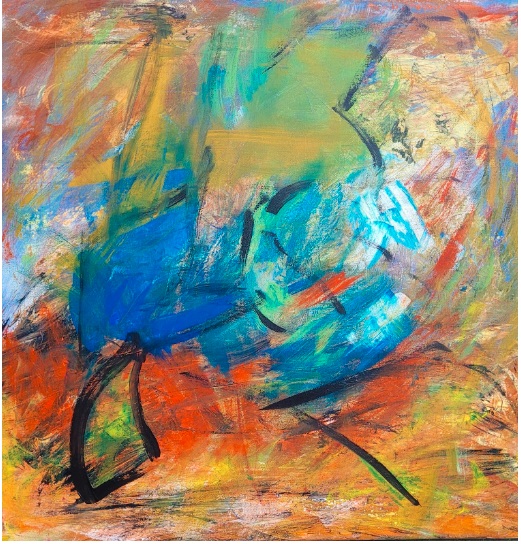There are artists who depict the visible world, and others who venture into the labyrinths of the inner self. Maurizio D’Andrea belongs to the latter, but with a distinctive approach: he does not simply translate dreams or memories into images; rather, he transforms the canvas into a stage for the unconscious, a space where symbolic thought becomes embodied and shared.
His painting grows out of a continuous dialogue with psychoanalysis and philosophy. Freud’s theories, Jung’s archetypes, Hillman’s visions, and Bachelard’s poetic imagination all find echoes in his work. Even the ancient rhetorician Gorgias resonates here: just as the spoken word could seduce, wound, or heal, so too does D’Andrea’s image act as an active force—capable of altering perception and unsettling the viewer.

Gesture and Symbol Intertwined
D’Andrea’s canvases are sustained by a constant tension. On one side, the painterly gesture—urgent, layered, raw—reveals the visceral energy of the unconscious. On the other, symbolic traces emerge: archaic signs of a collective language that exceeds the individual. His painting is never mere surface, but a dynamic field of forces, a stage where matter and form struggle and converge.
The Ambivalence of the Work
These images are not meant to soothe. On the contrary, they are intentionally unsettling: they attract and repel, wound and heal, acting as a pharmakon. His painting becomes a site of crisis—not offering reassuring truths, but compelling the viewer into a confrontation with what remains hidden. In this encounter lies the cognitive power of art: not as decoration, but as transformation.
Resonances and Divergences
Placing D’Andrea within the international panorama helps to illuminate his uniqueness. With Pollock or Rothko he shares the intensity of gesture and emotion, yet his perspective expands toward the collective, toward Jungian archetypes beyond the self. With Dalí or Ernst he shares an interest in the unconscious, but departs from dreamlike narration: his canvases do not tell dreams, they construct symbolic fields that require active participation. With Kiefer or Tàpies he shares the layering of matter and depth of memory, though his terrain is not history but the timeless rhythms of the psyche.
Within the Italian scene, his voice remains distinct: faithful to painting as an original act, yet moving beyond formalist echoes. Both archaic and contemporary, his language is rooted in universal symbols while resonating fully with the present moment.

Slowness as a Political Gesture
In an era that consumes images at the speed of a digital scroll, D’Andrea’s painting does the opposite: it slows down, resists, and demands silence. It does not provide easy answers but leaves questions suspended. It does not merely represent—it activates. It does not simply show—it transforms.
To call D’Andrea a “contemporary painter of the unconscious” is to recognize in him an artist who restores to art its deepest vocation: not as a mirror of the world, but as ritual, symbolic threshold, and lived experience—something that happens not only on the canvas, but above all within us.Author’s Website: www.dandreart.info

